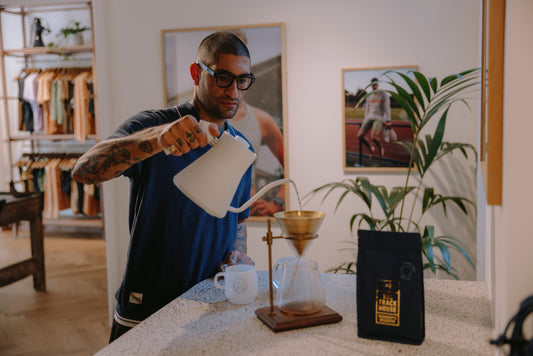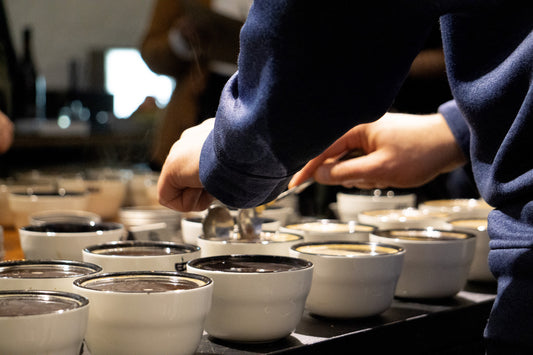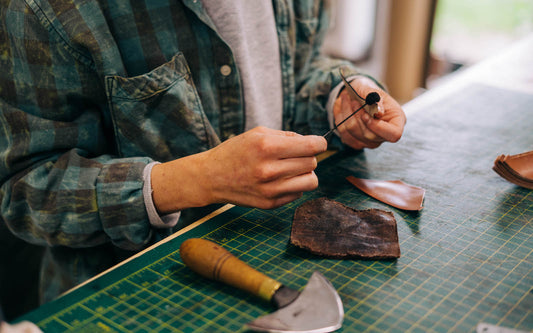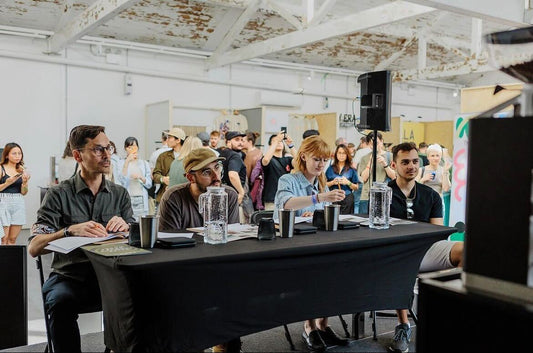I still haven’t made it South of the Equator in my life but I got pretty close this time. A trip to the Huila region of Colombia for two weeks, organised by Café Imports and Fairfield Trading in November 2013, meant that I got within a few hours drive but never broke through. I did however experience a tiny part of a huge country that saw the group I travelled with welcomed openly into farmers’ houses, offered produce straight from the allotment and witness a fraction of the immense amount of work that goes into the cultivation of the coffees we buy.

Based at San Agustín, a small town at the southern point of Huila, the goal each day was to cup coffees from different groups in the region at the newly built Los Naranjos group cupping lab in the town centre, before visiting farms of coffees that scored highly. With cuppings set up and cleaned down by a pretty slick team of young locals led by Eduardo Sanchez, and all just starting their careers in coffee, we had but one task: cup. Over the course of four mornings more than 50 coffees from the groups of Gigante, Primaveral, Coocentral, Nariño, Palestina, Pitalito and Los Naranjos were assessed and happily each table offered up a few stand-outs that I could really focus on.

The first table of the first day threw up a clear winner; a Caturra lot stood above the rest in terms of clarity, sweetness and aroma. Produced by the current president of the Los Naranjos group, it just so happened to be the first farm we visited too; Asturias, owned by Miguel Augusto Ortega, a modest 4 hectare farm just outside of San Agustín. At an altitude of 1650 masl and planted with well established yellow and red Caturra alongside the more disease resistant, newer strain of Castillo, Miguel keeps his two varietals separate at all times through production and processing. Fertilising twice a year, he uses no insecticides to minimise dependancy on chemicals, however, as with all the farms we visited, Roya is present and has to be contained using fungicides when necessary. His farm was impeccable in its presentation with all trees showing healthy and abundant growth in the first few weeks of main harvest, and more importantly the cherries picked showed uniformity in ripeness before pulping. As soon as I could get a quiet word with the guys at Café Imports I expressed my interest and we are now pleased to be able to offer Finca Asturias as our next Single Origin espresso release.

Miguel Augusto Ortega, President of Asociacion Los Naranjos

Fully ripe Yellow Caturra
Feeding red and yellow Caturra down through a disc pulper at Finca Asturias
Unfortunately not every farm visited showed the same consistency of ripeness in cherries pre-pulping. Even though each farm washed and skimmed the floaters once pulped, the quality of the finished product at some of the farms will inevitably be debatable due to the amounts of under and overripes that make it through. From a roaster's perspective, no doubt each batch roasted would require a fair amount of hand sorting in the cooling tray to remove these defects.
A mix of ripe red and yellow Caturra with green unripes and black over-ripes
The step of pre-pulping sorting is not the norm across Colombia but one farm is leading the way whose coffee Workshop know well, Finca Tamana. As the rest of the group returned to their respective countries after a week full of cuppings and farm visits with Café Imports, I was lucky enough for Alejandro Renifo of Fairfield Trading to arrange for me to spend two nights at Tamana, his son Sascha acting as interpreter. I already had the pleasure of meeting Elias Roa, Tamana's owner, earlier in the week when we'd stopped in at his other farm in Acevedo but now I was to be a guest under his roof and shown the workings and practices that make Tamana an example for others when it comes to specialty coffee production in Colombia.



Pre-pulping hand sorting
Working closely with Tim Wendelboe of Nordic Approach, Elias has embraced a number of additional steps and controls required to increase the overall quality of the final cup. Hand sorting, a zinc-lined cherry hopper that is kept spotless, a washing process that makes ample use of the natural spring found on the farm and more besides; all contribute to coffee that has superior cleanliness and clarity of flavour. Paying his workers 50% more than other farms in the area to ensure that the extra steps are duly followed, and as a man with long-term vision and a desire to produce the best coffee he possibly can, Elias is now seeing the results after just a few years hard work. The innovation doesn't stop either. With Wendelboe visiting regularly, further improvements and procedures are being introduced and experiments carried out in areas such as drying, all with the same objective of attaining a higher level of green quality and longevity.


Colombia is somewhat different to most producing countries due to it's production being split into two harvests over the course of the year; the main harvest and the mitaca, a smaller harvest that produces about a third of the main crop. Fairfield Trading explains it as follows:
Colombia has an unique advantage in terms of offering fresh coffee all year around because it has two distinct alternating harvesting seasons. Regions, located to the north, have their main primary harvest during the second semester, and a smaller secondary mitaca harvest during the first semester. The reverse occurs in the regions towards the south
Factors like altitude, luminosity, soil and unique micro-climate patterns cause exceptions to this rule. In these areas the harvest cycle tends to be evenly distributed during the year, or a single short harvest.
Due to the factors mentioned above, farms separated by as little as 100km can be in different harvests, so whilst the region around San Agustín was in full harvest, Tamana, 200km to the north but still in Huila, was in mitaca. Elias only had his core picking team of eight tasked with clearing the mitaca harvest, working the farm in separate lots to a set schedule each day, yet it is not only picking duties this team perform. All are coached in spotting the early signs of roya and combatting Broca so walking through the farm it was obvious the trees remain in great condition regardless of the problems that can befall coffee, a combination of training and teamwork being the most effective weapon.

A few isolated spots of roya, a sign of excellent farm management at Tamana
Elias and Tim are rightly very proud of what they have achieved in the space of a few years at Tamana, so much so that Finca Tamana by Tim Wendelboe has just been released, a beautiful photographic documentation featuring insight into the farming practices that make Tamana the coffee we know and love. Workshop are under no impression that the work is finished at Tamana, however we are glad that we have helped through our purchase of the coffee and look forward to tasting new crops to come and further visits to see Elias and his team at the farm. What we do have is a greater understanding of the amount of effort and dedication that goes into producing coffee both at Tamana and also the work of other farmers around the region of Huila, Colombia. And boy was this little guy awesome.

Share:











